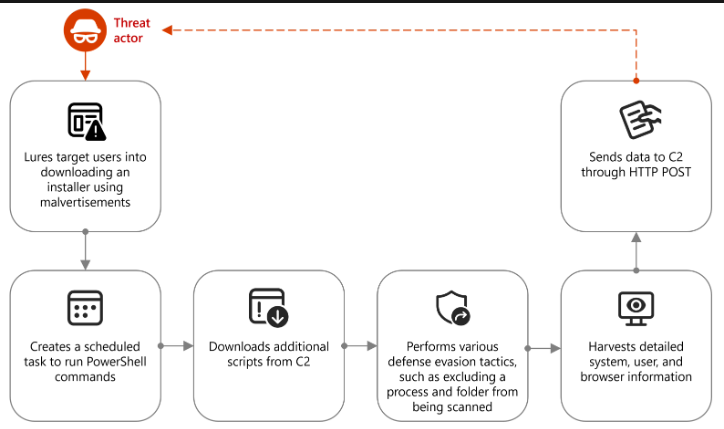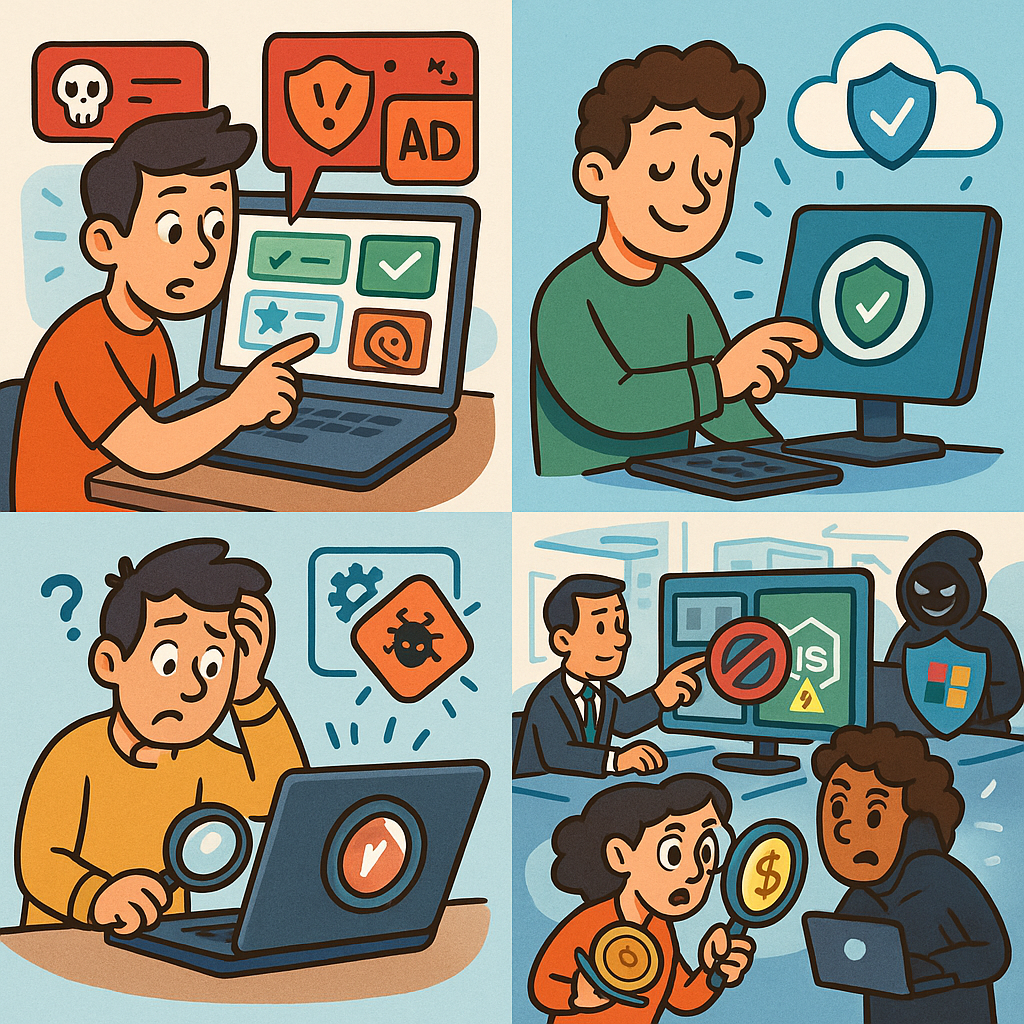In April 2025, Microsoft shared a blog post about how cybercriminals are using Node.js, a popular tool for building apps, to spread harmful software (malware). Let’s break it down in easy terms.
What is Node.js? Node.js is a tool that lets developers write JavaScript code to create websites and apps. It’s widely used because it’s fast and works on many devices, like a super handy toolbox for building online stuff.

How Are Cybercriminals Using Node.js? Bad actors are taking advantage of Node.js to trick people and sneak malware onto their devices. Malware can steal your personal info, like passwords, or damage your computer. Here’s how they do it:
- Fake Ads (Malvertising): They create fake ads, often about cryptocurrency trading (like Bitcoin), that trick you into visiting fake websites with harmful downloads pretending to be trusted software.
- Hiding Malware in Plain Sight: They use Node.js to make malware look like normal app code, so antivirus programs can’t spot it easily.
- Running Malicious Code Directly: They run harmful code straight from a command line using Node.js, without leaving a file that could be caught.
Real Examples of These Attacks Microsoft noticed these attacks starting in October 2024, and some were active in April 2025. Here are two examples:
- Cryptocurrency Scam: A fake ad about crypto trading lured people to download a harmful installer that collected info about their computer and opened the door for more attacks.
- ClickFix Trick: Cybercriminals tricked people into copying and running a harmful command that used Node.js to run malicious code and spy on their network.

Why Is This a Big Deal? Node.js is trusted by millions of developers, so it’s a perfect disguise for cybercriminals. These attacks are sneaky because:
- They blend in with normal apps, making them hard to detect.
- They can bypass traditional security tools like antivirus software.
- They can steal sensitive data or even take control of your device.
How Can You Stay Safe? Microsoft shared some easy steps to protect yourself from these Node.js attacks:
- Be Careful with Downloads: Only download software from trusted websites. Don’t click on suspicious ads or websites.
- Keep Your Antivirus On: Make sure your antivirus is up to date and has cloud protection enabled.
- Watch for Strange Behavior: If your computer slows down or shows odd pop-ups, scan it for malware.
- Use Strong Security Settings: For businesses, monitor Node.js usage and block suspicious websites.
- Stay Informed: Learn about common scams, like fake crypto ads, to avoid falling for tricks.
What’s Next? Cybercriminals are always finding new ways to attack, and Node.js is just one tool they’re misusing. By staying cautious and following Microsoft’s advice, you can stay safe. For more details, check out Microsoft’s original post on their Security Blog.


